People are curious about reindeer for a variety of reasons, of one which is their role in popular legends and stories. Many people associate real reindeer with Scandinavian countries like Norway, which leads them to the question, what exactly are reindeer used for in Norway?
Reindeer have many purposes in Norway. They are working animals, and are used to pull carts, for instance. Reindeer are used in display around Christmas time.
They also pull sleds in racing competitions. People also milk reindeer, eat their meat, wear their hide, and fashion their antlers into tools, too.
Reindeer have a variety of uses in Norway, because they are the only domesticated deer in the world, which enables people to train and teach them.
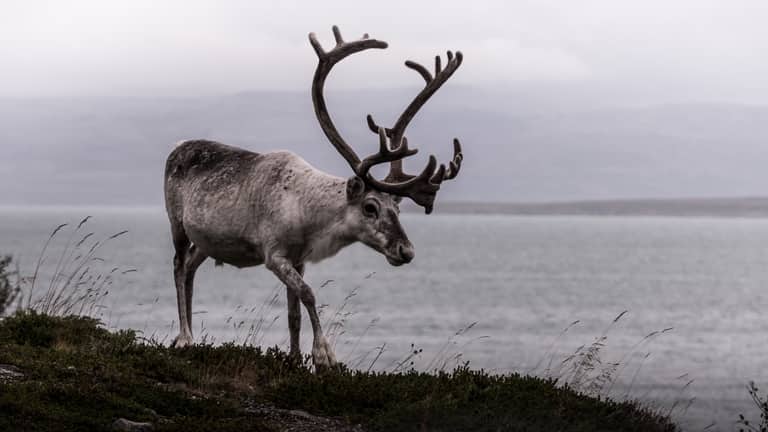
Norwegians have been utilizing reindeer for centuries to benefit their way of life in Northern Europe.
Norwegians have interesting customs. See Ever Wonder Why Norwegian Houses Are Red? Here’s Why to learn more.
Eating Reindeer in Norway
There are thousands of reindeer in Norway, including domesticated ones that are herded and wild ones that roam free in designated regions.
Reindeer have been important to Norway for generations for a variety of reasons. Yet many people want to know, do people eat reindeer in Norway?
Yes, people eat reindeer in Norway. Reindeer meat is bought and sold in grocery stores in certain areas of the country. Some restaurants also offer dishes that include reindeer meat on their menus.
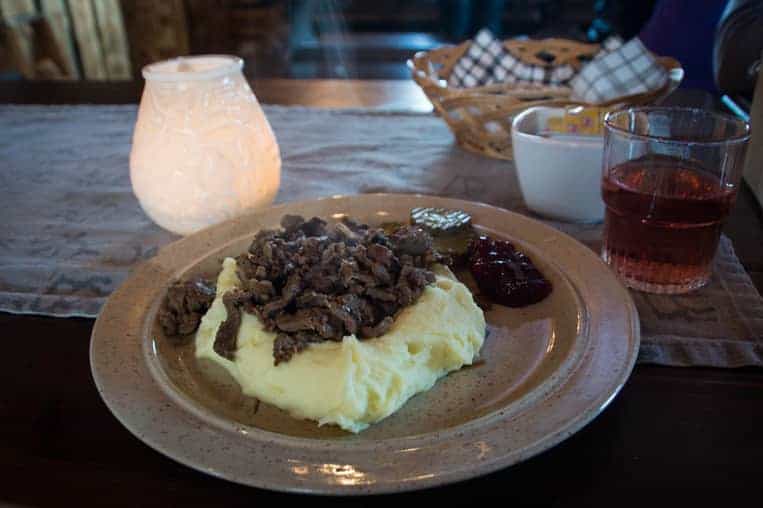
While eating reindeer may seem unusual to non-Scandinavians, it has a rich tradition in Norway and offers willing visitors a unique experience.
Norwegians eat reindeer in a variety of ways, such as in soups and cuisines. People also smoke it.
Below are some of the common traditional dishes that include reindeer meat, a few popular recipes, and some nutrition information as well.
Norway has a fascinating history. See Norway in World War 2: Interesting Facts to learn more.
Norwegian Reindeer Dishes: Examples
Reindeer cuisine
Reindeer meat is a traditional ingredient in cuisines made by the indigenous Sami people in northern Norway. The Sami people are not Norwegian ethnically, but they live in areas of northern Norway, Sweden, and Finland.
When the Sami people eat reindeer meat, it is often combined with other foods found in the area like berries, fish, bird, moose, and vegetables.
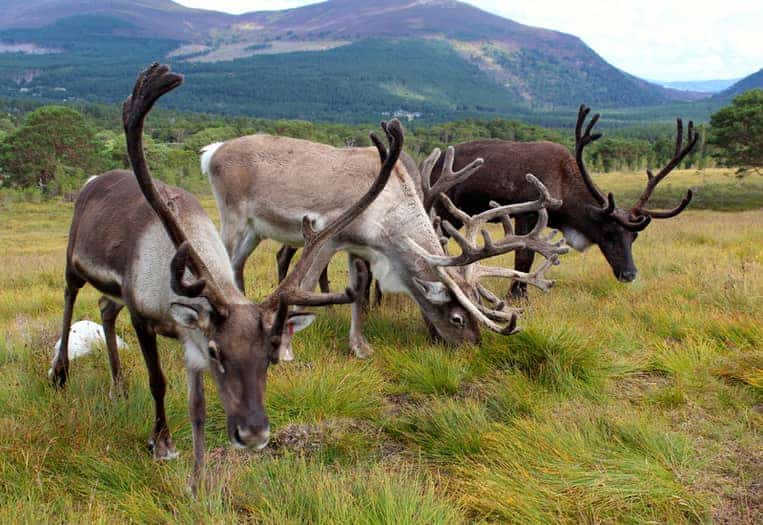
Dishes with reindeer meat include soups, stews, and casseroles. Some also bake small bits of reindeer meat into bread as well in order to give it protein and added flavor.
Dried reindeer meat
Another popular form of eating reindeer in Norway is smoking and drying it.
Traditionally, people, including Norwegians, have dried meat for centuries in order to preserve it so they don’t have to eat it right away.
Today, while preserving it may be a factor for some, many people just enjoy eating smoked and dried meat because of the tougher texture and the added taste of certain seasonings that go well with it.
Eating smoked and dried meat in Norway is especially common on certain holidays like Christmas.
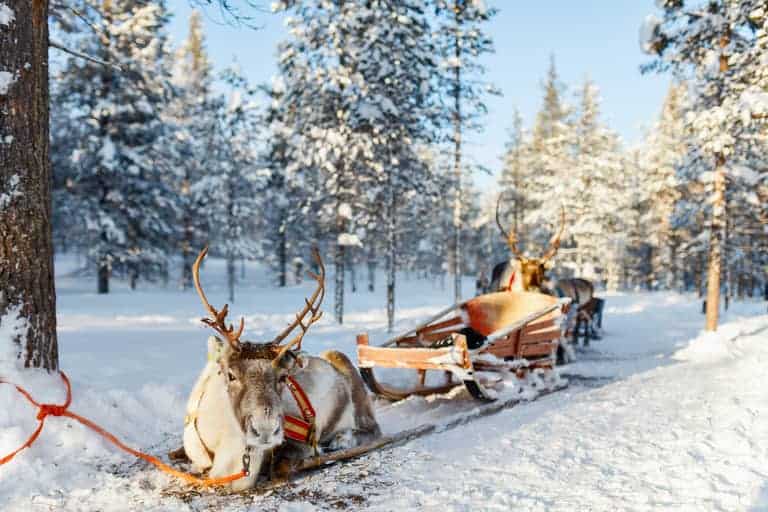
Blodplattar
Reindeer meat is sometimes an added ingredient to blodplatter, a traditional dish served in Norway. Blodplatter – meaning, “blood pancakes” – takes the shape of a flat circle (i.e. a pancake), unlike a dish with similar ingredients, black pudding, which is often prepared as a sausage.
Blodplattar is prepared in a frying pan. It is often served with different meats, including sheep, moose, and reindeer.
Reindeer steak
Another traditional way of preparing reindeer in Norway is by sauteing it. Cooks may prepare the steak in reindeer fat, butter, and oil.
Some may also add ingredients like berries, potatoes, and other vegetables to supplement the meat and add to the taste.
Scandinavians have special relationships with each other. See Why Do Norwegians Hate Swedes and Danes? to learn more.
Is Reindeer meat healthy for you?
Reindeer meat is very healthy. It’s high in fatty acids, similar to seafood like cod and crab. 100 grams of reindeer supplies a person with the recommended daily dose of Omega-3 and Omega-6 fatty acids.
Reindeer meat is also lean, containing about 2% fat, which is more than other red meats, like beef, for instance. It has twice as much vitamin B12 than veal or lamb. [1]
Reindeer meat tastes like other lean meat. It is not tough, like some kinds of venison. The smell is not particularly gamey, but sometimes the meat contains a metallic taste. [2]

The ethics of eating reindeer meat
Like in other countries around the world, there are people in Norway that are vegetarian and vegan. The health benefits of eating such a diet motivate some.
Others, however, are convicted to not eat meat for ethical reasons. They believe it is immoral to eat animals, including reindeer.
The conversation about reindeer is ongoing in Norway. Some believe strongly that past traditions regarding herding and eating reindeer should be preserved.
They also argue that vegetarianism and veganism should not be forced upon the indigenous Sami people.
They ask, why should modern movements be forced upon Norwegians or Sami who prefer traditional ways of living and eating?
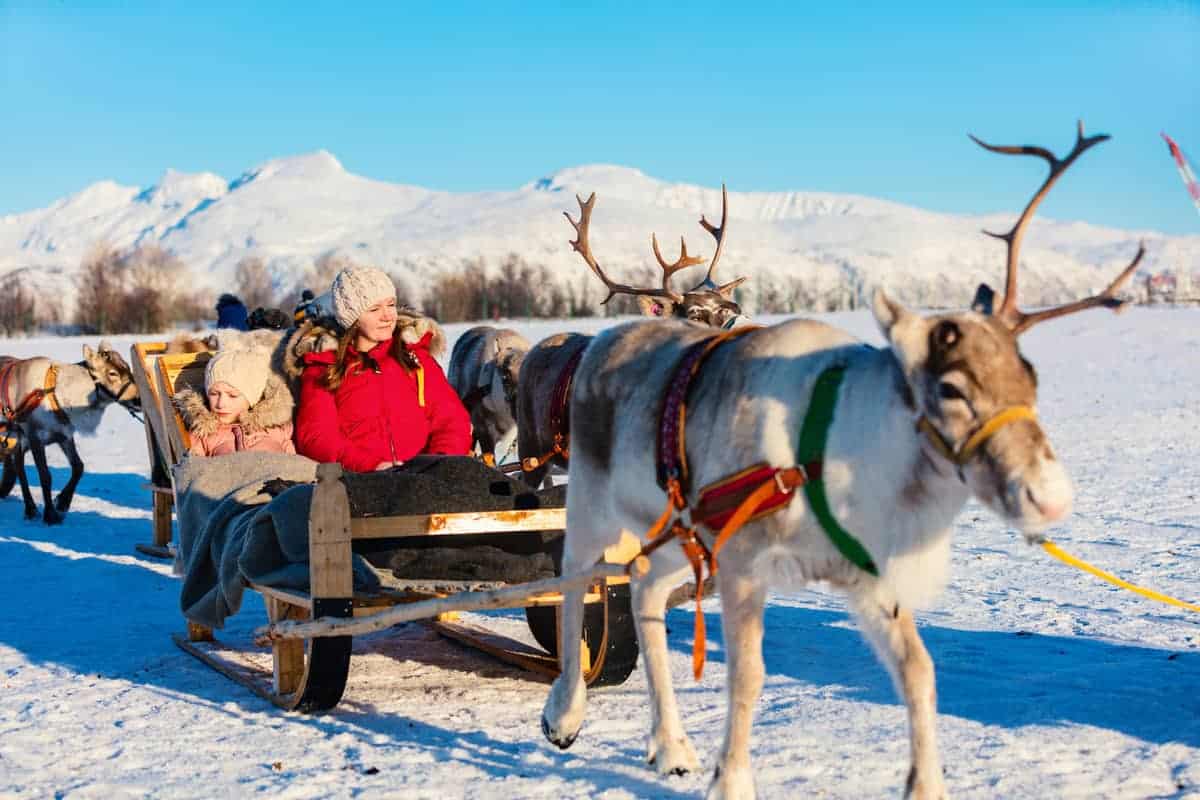
On the other hand, people argue that important issues related to animals and the environment should supersede tradition.
While many with this view see benefits of raising, herding, and using resources that reindeer provide, like milk or shed antlers, they oppose killing the animals to eat their meat.
Like other places in the world, these issues won’t be quickly resolved. History and tradition are strong factors in culture.
Yet, modern movements often reflect current sensitivities and therefore gain momentum in cultures. For the time being, it seems that there will be tension regarding this matter.
Example recipes using reindeer meat
Nordic Shave Meat Stew
Ingredients
1 1⁄4 lb (570g) shaved reindeer meat
1⁄4 lb (114g) bacon, diced
1 1⁄3 cups (100g) fresh mushrooms, cut
1 cup (240ml) water
1 1⁄4 cups (300ml) sour cream
1⁄2 cup (120ml) milk
2 oz (60g) Nordic brown goat cheese (sold as Gjetost or Brunost)
1⁄2 teaspoon dried thyme
5 crushed juniper berries (optional)
Salt and pepper (to taste)
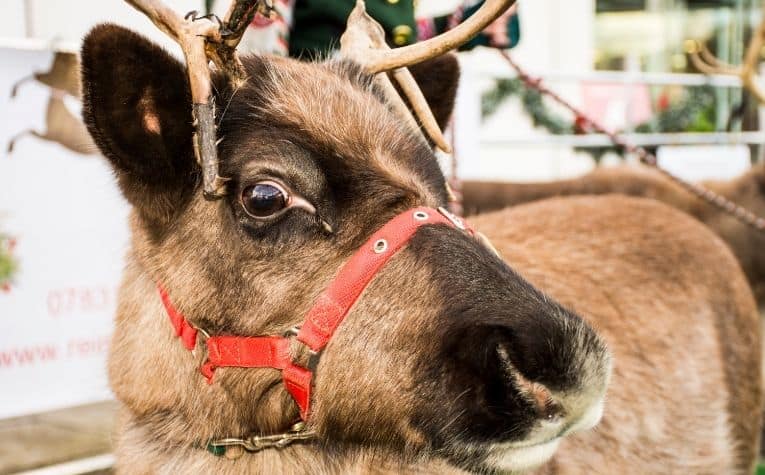
Instructions
The reindeer meat should be sliced as thin as possible from a frozen form. Add the meat straight to a pot, on high heat, with the bacon and mushrooms.
Brown the ingredients with butter. Add water to the pot and bring it to a boil. Let it simmer for 10 minutes.
Add in the rest of the ingredients and continue to simmer for an additional 5 minutes. Serve immediately. [3]
Roast Reindeer
Ingredients
300g deep-frozen reindeer meat
100g greasy pork or 100 g American bacon
½ teaspoon salt
2 pinches black pepper
200 ml beer (homemade, if possible) or 2 water
Instructions
Thaw the reindeer meat so the slices separate each other. Cut the bacon up in slices. Roll the bacon slices in a pan until the fat melts.
Add the reindeer meat and brown it lightly with the bacon.
Add spices and beer or water. Keep it under a lid for about a half an hour.
Prepare mashed potatoes, put them in a bowl and make a groove in the middle of the mashed potatoes. Pour the roast reindeer in the groove. [4]
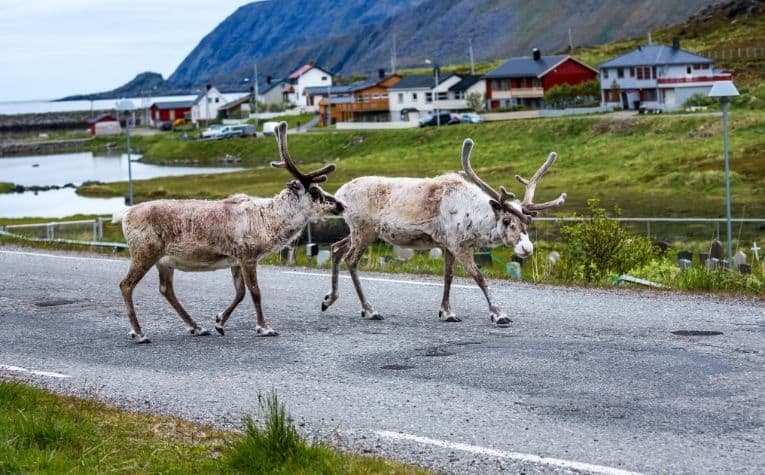
Norwegian Reindeer Meat Cakes
Ingredients
1 ½ lbs reindeer meat (or venison), ground
2 tsp salt\
½ tsp freshly ground pepper
¼ tsp fresh ginger, grated
½ tsp freshly ground nutmeg
⅛ tsp freshly ground cloves
2 tbsp cornstarch
2 eggs
1 cup heavy cream
2 tbsp clarified butter for frying
Instructions
Make the sauce first in a saucepan over medium heat. Add the Aquavit and some clarified butter until sizzling. Add the onion and sauté on medium heat until clear, about 5-10 minutes. Add the mushrooms and sauté further, another 10 minutes.
Add the stock and let it simmer then reduce by half. Add the juniper berries, heavy cream and brown cheese and simmer for another 10-15 minutes. Finally, add the currant jelly and season with salt and pepper.
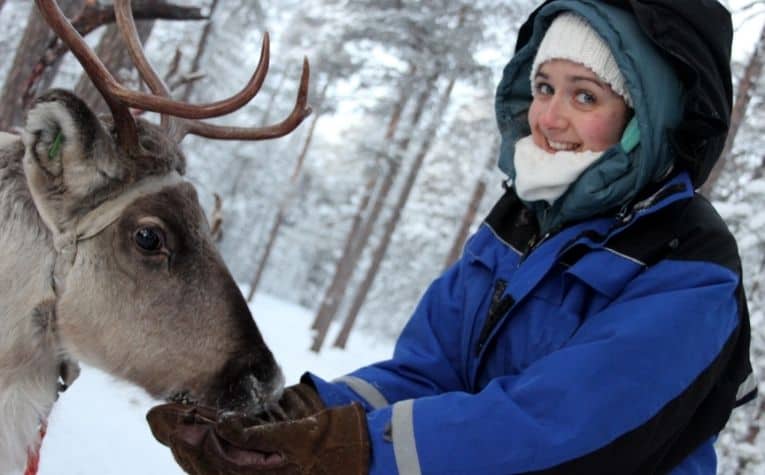
For the meat cakes: Place the ground venison meat in a large bowl, and add in spices, salt, pepper and potato starch, and mix into meat. Add the eggs and heavy cream and combine well.
Shape into round patties, and fry them in a sauté pan for about 5 minutes on each side. Add them into the sauce and let them steep under low heat for about 15 minutes.
Serve with boiled or oven-fried potatoes and lingonberries, and some delicious greens. [5]
Reindeer are valued animals in Norway. They are an important part of Norwegian history and culture.
Many people see them as an important resource for everything they provide, from meat, to fur, to antlers, and milk. They are also valued for their ability to be domesticated.
Reindeer have helped Norwegians for centuries and they will continue to aid people for years to come.
Reindeer are used as work animals in Norway
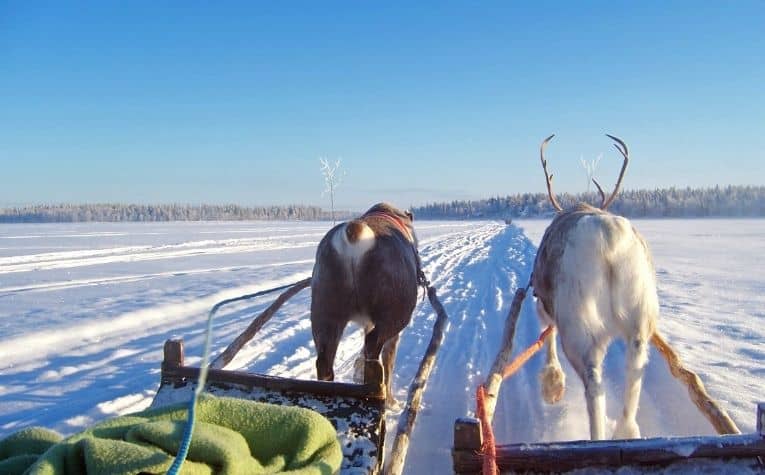
As working animals, or draft animals, reindeer help people perform a variety of tasks, which makes work easier for farmers and others.
Using reindeer for transportation
Some Norwegians have used reindeer for transportation, similar to how people in other cultures have used horses and mules. In modern times, this is less common, but in some areas, it still occurs.
Some in rural areas to this out of a desire to save money on gasoline. Others opt to use reindeer out of personal preference, such as enjoying the nostalgic ties to the past.
The most common way people use reindeer for travel is by having the animals pull a sleigh, sled, or wagon of some kind, which people ride on or in.
Sometimes traveling by reindeer is done for personal reasons, like when visiting a family member or friend.
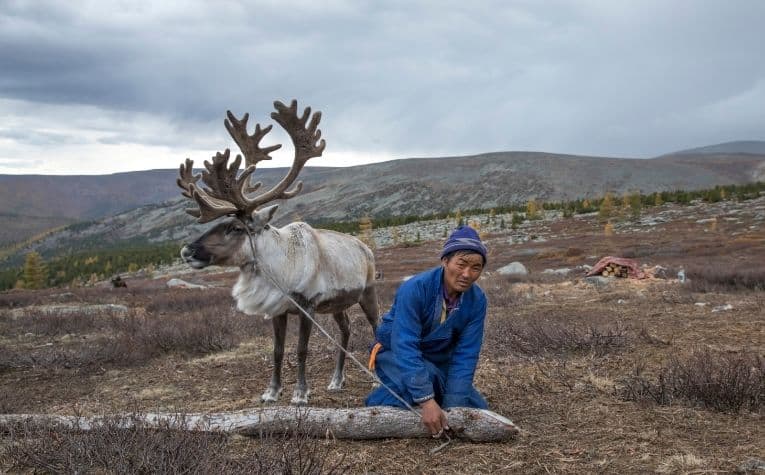
Other times, the purpose is related to business, such as when a person is delivering goods or providing services to their customers.
The less common way people use reindeer is to ride on the back of one. Similar to riding a horse, a saddle can be placed on a reindeer to make the journey more comfortable for the rider as well as the animal.
When it is unusual to think about someone riding a deer, it is possible because reindeer are domesticated and can be trained.
Using reindeer as pack animals
Some people use reindeer to carry goods like food and wood, in the same way horses, mules, and camels are used for such purposes elsewhere in the world.
The reindeer is often fitted with a saddle-like harness that is able to hold a wide variety of goods and resources. The herder or packer then walks alongside the reindeer.
Like other pack animals, reindeer can endure long periods of hard work. Their strong bodies and thick fur are compatible with the cooler climate of Norway.
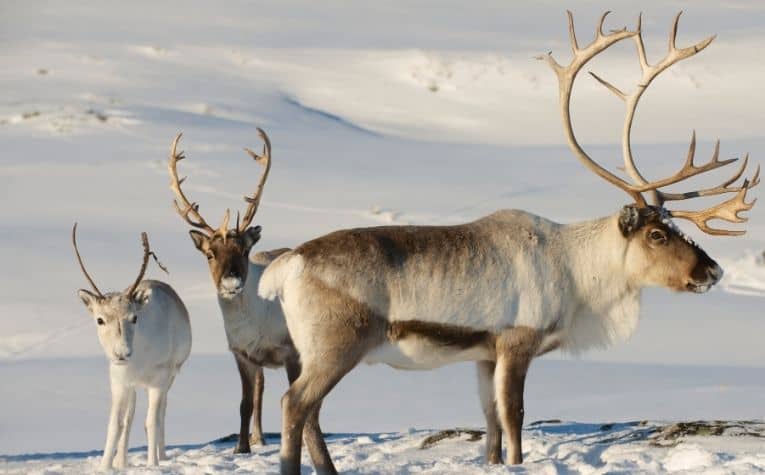
Entertaining Norwegian tourists
The story of Santa Claus and his flying reindeer delivering Christmas gifts to children, is one of the most well-known legends in the world today.
It was popularized by Clement Clark Moore’s 1823 poem commonly known as “The Night Before Christmas,” which includes a famous section of flying reindeer:
When, what to my wondering eyes should appear,
but a miniature sleigh, and eight tiny rein-deer,
with a little old driver, so lively and quick,
I knew in a moment it must be St. Nick.
More rapid than eagles his coursers they came,
And he whistled, and shouted, and call’d them by name:
“Now, Dasher! Now, Dancer! Now, Prancer, and Vixen!
“On, Comet! On, Cupid! On, Dunder and Blixem!
“To the top of the porch! to the top of the wall!
“Now dash away! dash away! dash away all!”
As dry leaves that before the wild hurricane fly,
When they meet with an obstacle, mount to the sky;
So up to the house-top the coursers they flew.
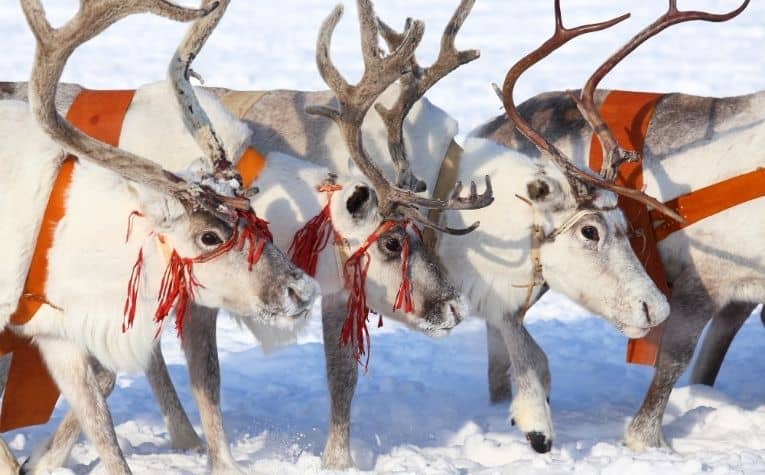
Because many people generally associate reindeer with Scandinavia, people associate Santa Claus’ reindeer with Scandinavia as well.
Norway, like other countries in Northern Europe, celebrates the famous story to the delight of visitors and tourists.
Celebrations, like festive Christmas parades, often include nine living reindeer often connected to a sleigh with a Santa figure sitting inside it, surrounded by presents.
While the classic poem mentions just eight reindeer – Dasher, Dancer, Prancer, Vixen, Comet, Cupid, Donder and Blitzen – the 1949 Christmas song “Rudolph the Red-Nosed Reindeer” popularized a ninth reindeer, which is often the one people are most likely to know today.
People like to see reindeer up close, pet the top of their heads, feel their antlers, and touch their fur.
The reindeer are generally accommodating as their domestication has given them calm personalities and non-aggressive postures toward strangers.
Some reindeer have jingling bells tied to their antlers or collar. Others are clothed in green and red blankets or other decor.
Families enjoy taking pictures with the reindeer and seeing real-life animals they had only previously seen in traditional stories and legends.
The story of Santa Claus, because its association with the North Pole, reflects Nordic life in many ways.
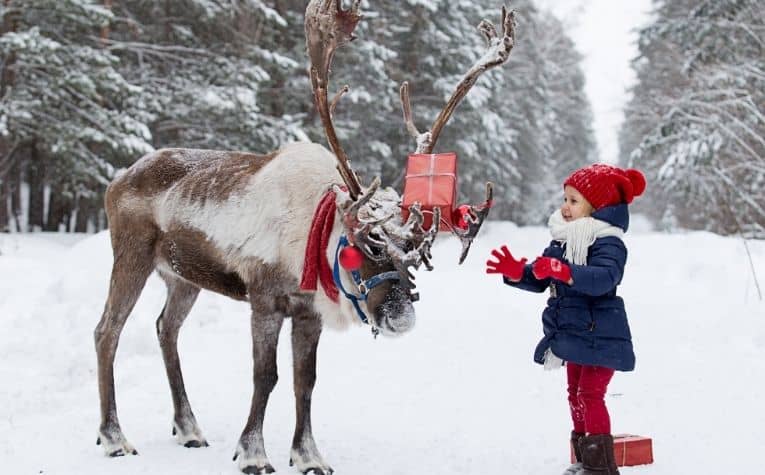
Reindeer Racing
Reindeer racing is a traditional activity in parts of Norway, such as in the northern city of Tromso. Often called “skijoring” – meaning “ski driving” – the most common form is when reindeer pull a person who is on skis through the snow.
Historians believe that skijoring was a mode of transportation in Norway before it became a recreational game.
The Nordic Games, which are considered to be a precursor to the present-day Winter Olympics, featured reindeer racing.
Held between 1901 and 1926, the Nordic Games were the first multi-national winter games competition in the world. [6]
Norway participated in the games every year they were held and hosted them in 1903. Reindeer racing as an event occurred in 1901, 1905, and 1909.
Reindeer Herding
Thousands of people herd reindeer in Norway, just like cattle are herded elsewhere in the world.
Herding rounds the animals into groups for specific purposes, such as harvesting the various resources that reindeer naturally provide, and makes working with them easier.
Reindeer herding in Norway today is regulated. Norwegians can herd reindeer in certain areas as long as they abide by federal regulations.
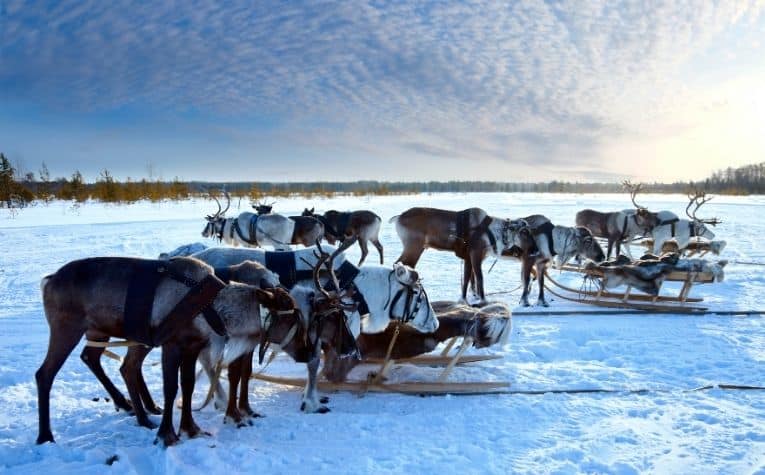
The Sami people, indigenous to parts of northern Norway, Sweden, and Finland, maintain legal rights to herd reindeer. [7]
Because of their native status, they are given more rights to practice herding like their ancestors did. These unique permissions allow them to carry on their traditions.
The Norwegian Reindeer Husbandry Administration (NRHA), which exists under the jurisdiction of the Ministry of Agriculture of Norway, oversees the herding industry.
According to the NRHA, approximately 3,000 herders have about 240,000 reindeer in Norway. [8]
People herd reindeer, in part, for their meat, milk, fur, antlers, and bones.
Reindeer meat
Reindeer meat is bought and sold in certain areas of Norway. Frozen reindeer meat can be purchased at grocery stores and taken home to prepare as steaks or to use as the protein base in stews.
Reindeer meat can also be ordered at some restaurants in Norway in the form of reindeer soup.
Reindeer milk
A reindeer can be milked for 1.5 cups per day. People use reindeer milk like they would use any other kind of milk, like cooking. One of the most well-liked products made from it is reindeer cheese.
Reindeer fur, antlers, bones, organs
People use other parts of reindeer, like fur, antlers, bones, and organs for reasons that other people use the same parts of deer, elk, or moose, elsewhere in the world.
Fur provides warmth. Bones and antlers can be made into tools. Organs can be eaten or be used for practical purposes.
References
[2] https://foodfuntravel.com/taste-norwegian-reindeer/
[3] https://globalgastros.com/nordic/shaved-meat-stew-recipe
[4] https://www.food.com/recipe/roast-reindeer-150407
[5] https://www.thefooddictator.com/hirshon-norwegian-reindeer-meat-cakes-reinsdyrkjottkaker/
[6] http://swedensport.com/swsport1.html
